 Exemplary applications of our camera add-on: Top Row: Multispectral imaging: unprocessed output (left), a spectral stack of
images after processing (middle), a neutral image relit with a flat spectrum (right). Middle Row: High Dynamic Range Imaging: unprocessed
output (left), a simulated exposure sweep of contrast ratio 100 : 1 (middle), a tone-mapped version of the HDR image (right). Bottom Row:
Light-field imaging: unprocessed output (left), virtual refocusing on foreground (middle) and background (right).
Exemplary applications of our camera add-on: Top Row: Multispectral imaging: unprocessed output (left), a spectral stack of
images after processing (middle), a neutral image relit with a flat spectrum (right). Middle Row: High Dynamic Range Imaging: unprocessed
output (left), a simulated exposure sweep of contrast ratio 100 : 1 (middle), a tone-mapped version of the HDR image (right). Bottom Row:
Light-field imaging: unprocessed output (left), virtual refocusing on foreground (middle) and background (right).
Abstract
We propose a non-permanent add-on that enables plenoptic imaging with standard cameras which we refer to as KaleidoCamera. Our design is based on a physical copying mechanism that multiplies a sensor image into a number of identical copies that still carry the plenoptic information of interest. Via different optical filters, we can then recover the desired information. A minor modification of the design also allows for aperture subsampling and, hence, light-field imaging. As the filters in our design are exchangeable, a reconfiguration for different imaging purposes is possible. We show in a prototype setup that high dynamic range, multispectral, polarization, and light-field imaging can be achieved with our design.Citation
A. Manakov, J. Restrepo, O.Klehm, R. Hegedus, E. Eisemann, H.-P. Seidel, I. Ihrke. 2013. A Reconfigurable Add-on for Multi-Spectral, High-Speed, Polarization and Light-Field Imaging. ACM Trans. Graph. 32, 4 (Proc. SIGGRAPH), 2013.
Bibtex
@article{KaleidoCamera-Manakov2013,
author = {Manakov, Alkhazur and Restrepo, John F. and Klehm, Oliver and Heged\"{u}s, Ramon and Eisemann, Elmar and Seidel, Hans-Peter and Ihrke, Ivo},
title = {A Reconfigurable Camera Add-on for High Dynamic Range, Multi-Spectral, Polarization, and Light-Field Imaging},
journal = {ACM Trans. Graph. (Proc. SIGGRAPH 2013)},
issue_date = {July 2013},
volume = {32},
number = {4},
month = jul,
year = {2013},
issn = {0730-0301},
pages = {47:1--47:14},
articleno = {47},
numpages = {14},
url = {http://doi.acm.org/10.1145/2461912.2461937},
doi = {10.1145/2461912.2461937},
acmid = {2461937},
publisher = {ACM},
address = {New York, NY, USA},
keywords = {computational optics, computational photography},
}
[KaleidoCamera-Manakov2013.bib]
author = {Manakov, Alkhazur and Restrepo, John F. and Klehm, Oliver and Heged\"{u}s, Ramon and Eisemann, Elmar and Seidel, Hans-Peter and Ihrke, Ivo},
title = {A Reconfigurable Camera Add-on for High Dynamic Range, Multi-Spectral, Polarization, and Light-Field Imaging},
journal = {ACM Trans. Graph. (Proc. SIGGRAPH 2013)},
issue_date = {July 2013},
volume = {32},
number = {4},
month = jul,
year = {2013},
issn = {0730-0301},
pages = {47:1--47:14},
articleno = {47},
numpages = {14},
url = {http://doi.acm.org/10.1145/2461912.2461937},
doi = {10.1145/2461912.2461937},
acmid = {2461937},
publisher = {ACM},
address = {New York, NY, USA},
keywords = {computational optics, computational photography},
}
Paper and Video
| Paper | [KaleidoCamera-Manakov2013.pdf] |
| Supplementary | [Supplement_KaleidoCamera.pdf] |
| Video | [KaleidoCamera-Manakov2013.mp4] |
Presentation
Here you can download the presentation for the talk given at SIGGRAPH 2013 and the video recording of the talk.| Presentation materials | [Presentation] |
| Video of the talk |
[SIGGRAPH talk] |
Press
Results
We show results for the light field design, as well as the filter-based design with filters for HDR, multispectral, and polarization photography.Light field
[show Light field results]Captured image
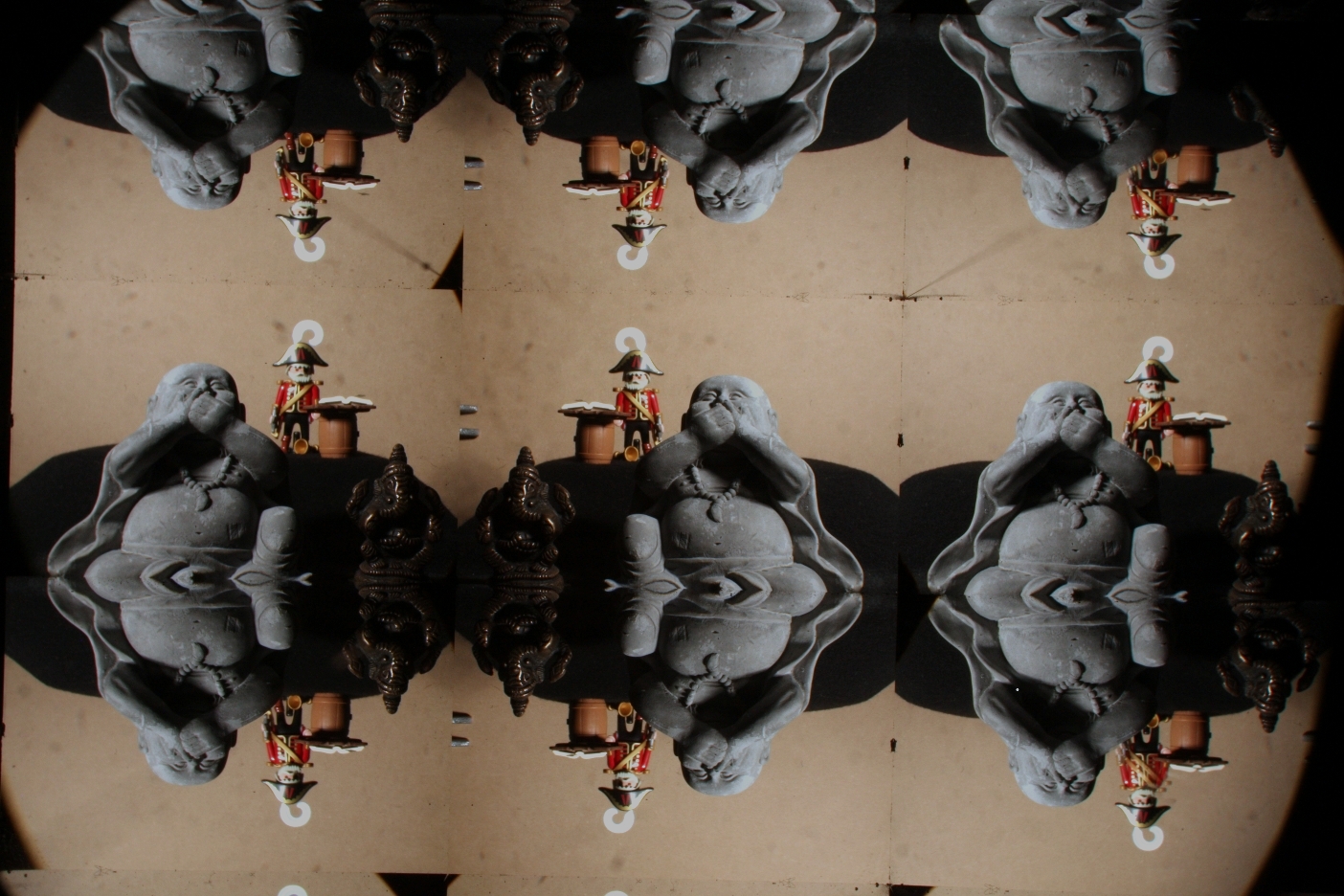 In the light-field configuration of the KaleidoCamera the diffuser is removed, which enables sub-sampling of viewing directions.
The central sub-image is a direct view to the scene (without reflections). The other sub-images are the other views of the scene, flipped because of the mirror-reflection. The corner sub-images
are flipped twice because of a double mirror-reflection.
Please pay attention to the parallax, for instance, look at the left of the pirate.
In the central sub-image it is slightly occluded by Buddha's right shoulder, in the left image in the second row the leg is fully visible, and in the right image it is ocluded.
In the light-field configuration of the KaleidoCamera the diffuser is removed, which enables sub-sampling of viewing directions.
The central sub-image is a direct view to the scene (without reflections). The other sub-images are the other views of the scene, flipped because of the mirror-reflection. The corner sub-images
are flipped twice because of a double mirror-reflection.
Please pay attention to the parallax, for instance, look at the left of the pirate.
In the central sub-image it is slightly occluded by Buddha's right shoulder, in the left image in the second row the leg is fully visible, and in the right image it is ocluded.
Refocusing Sequence
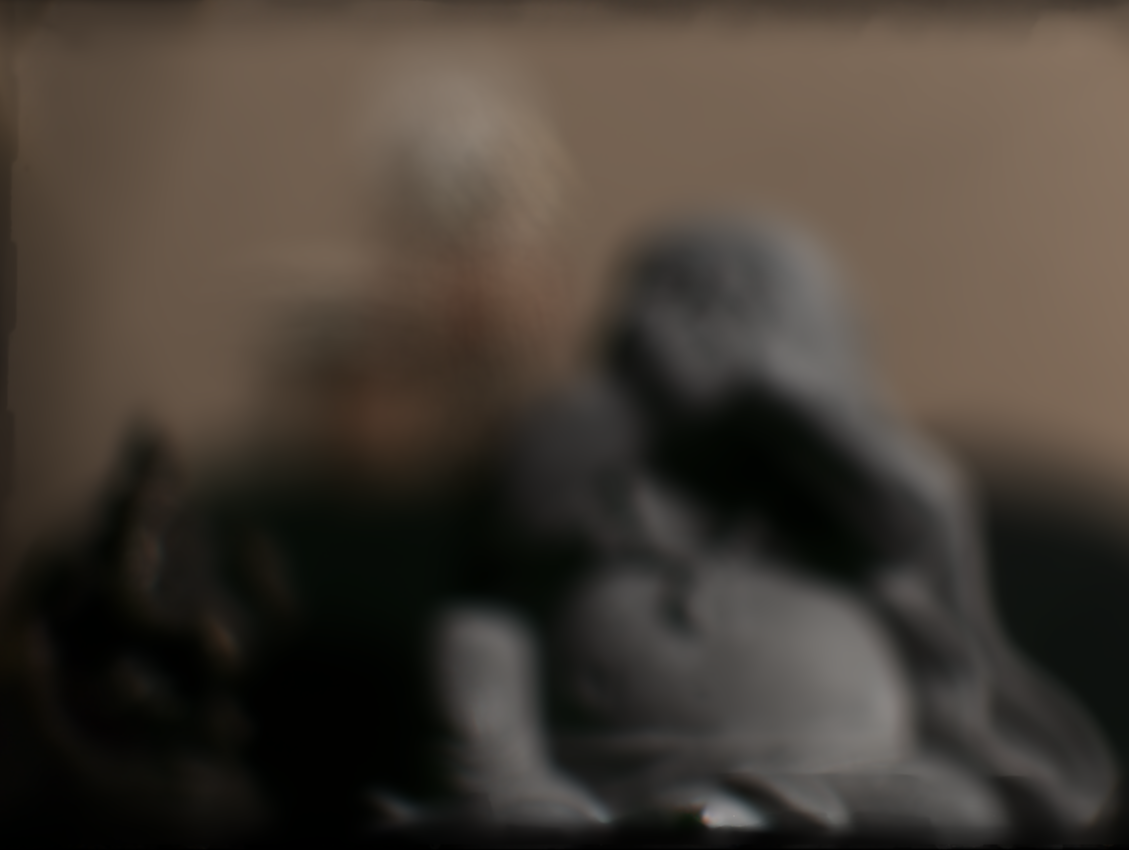
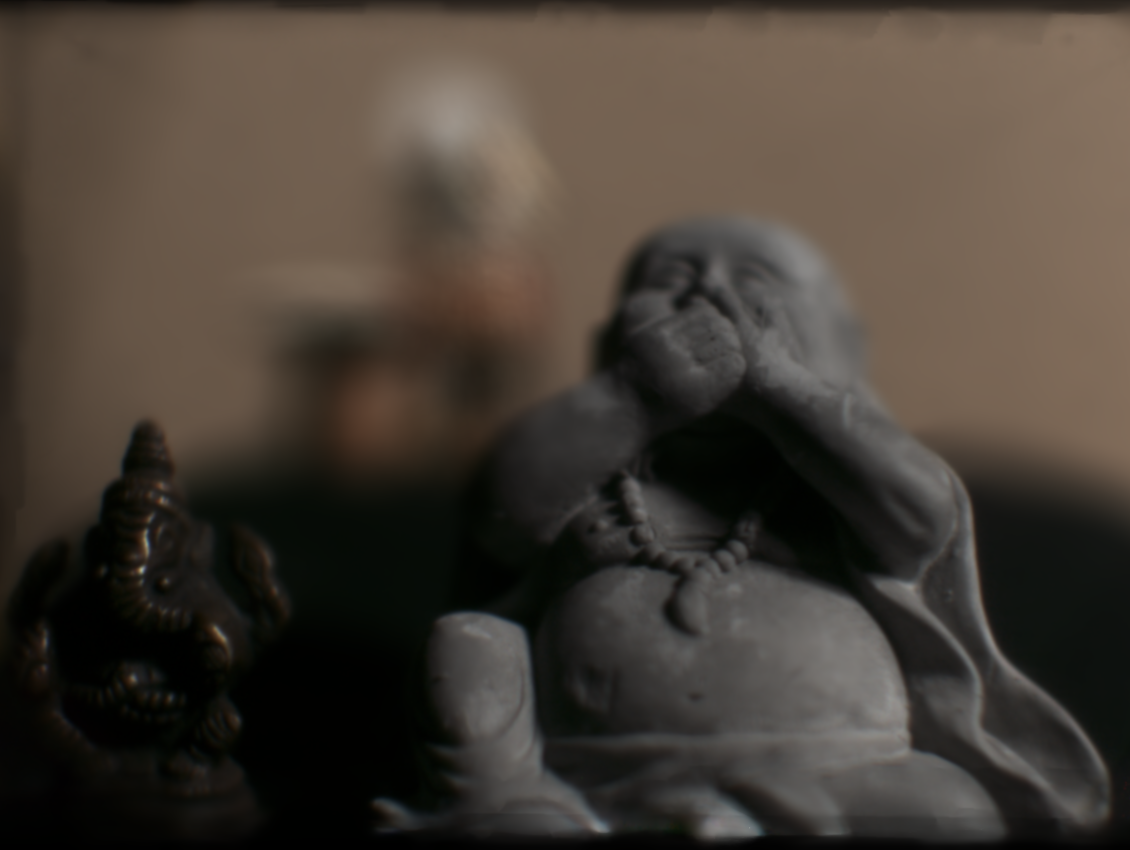
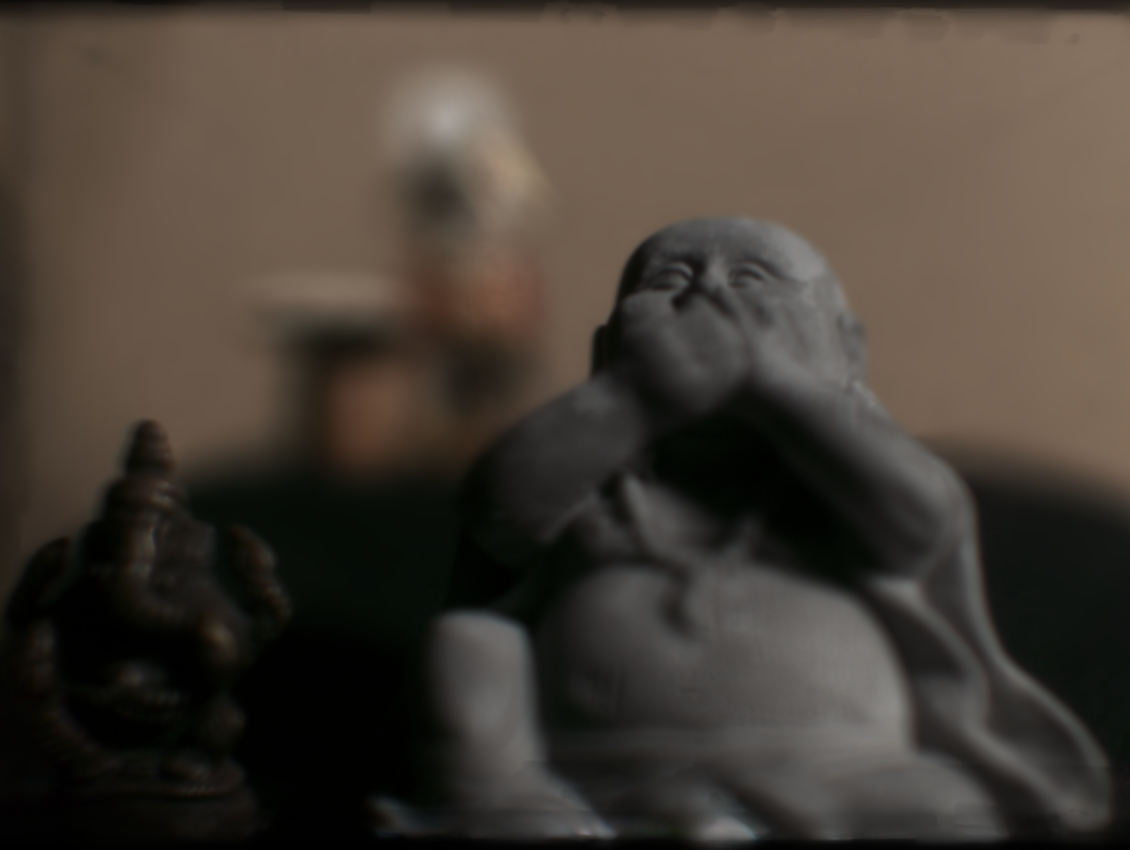
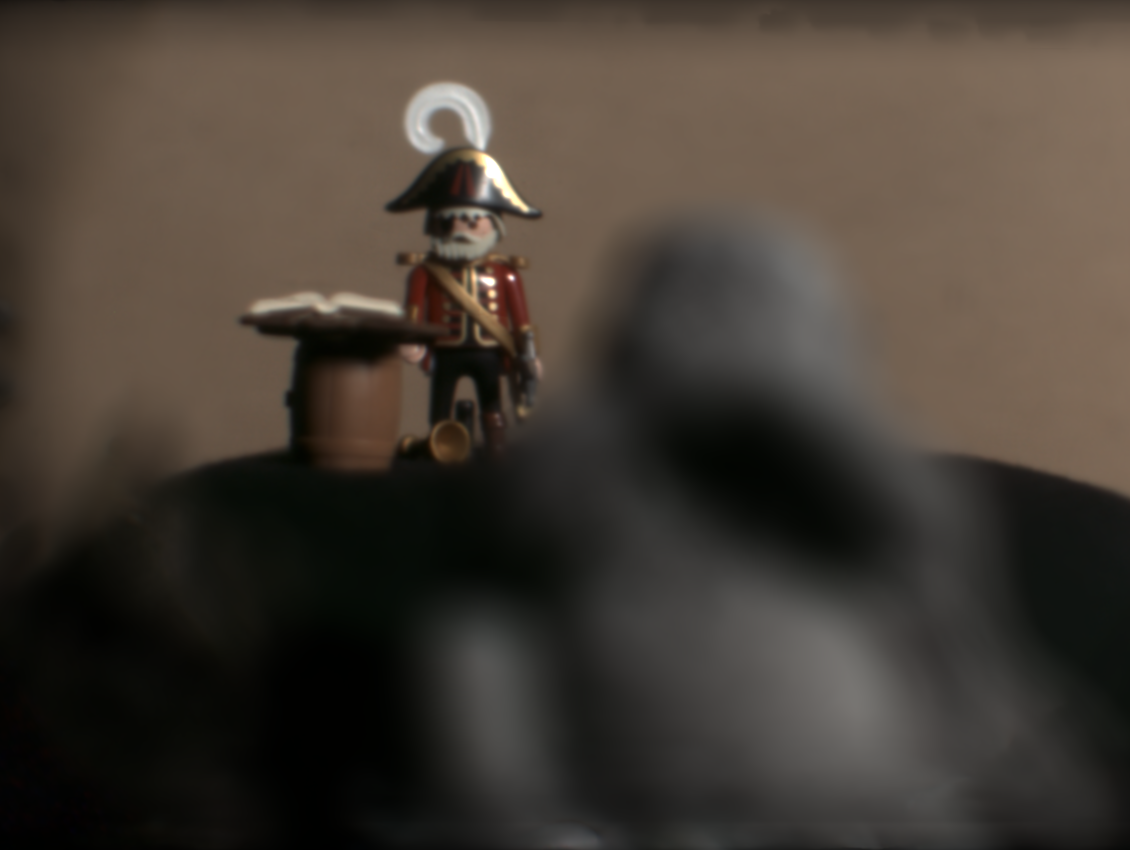
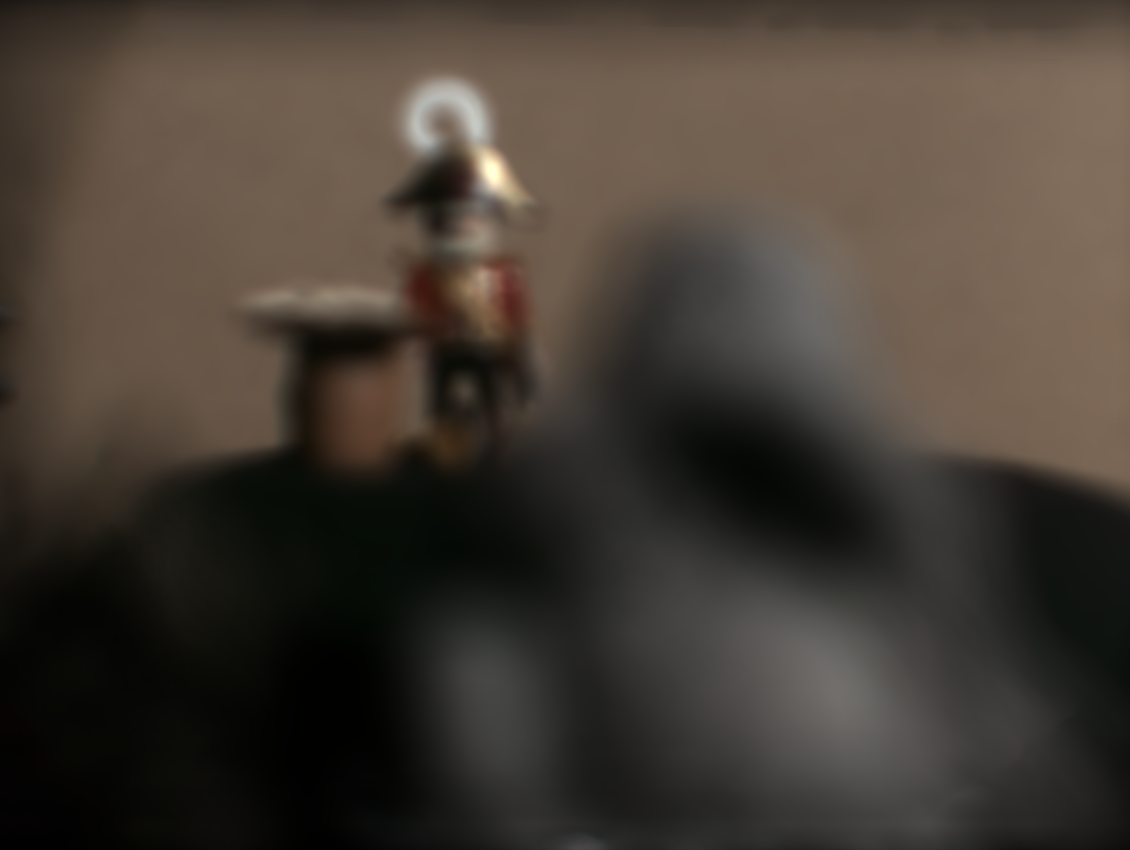
If you seen an error message, please try reloading the page.
High Dynamic Range
[show High Dynamic Range results]Captured image
Simulated exposure sweep
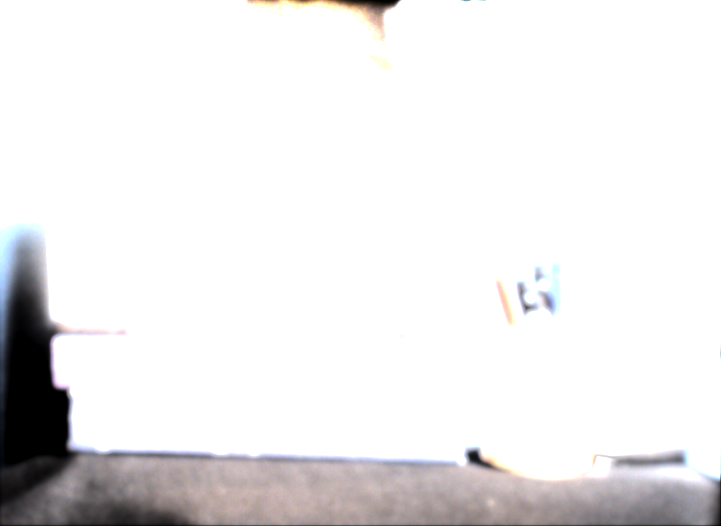
|
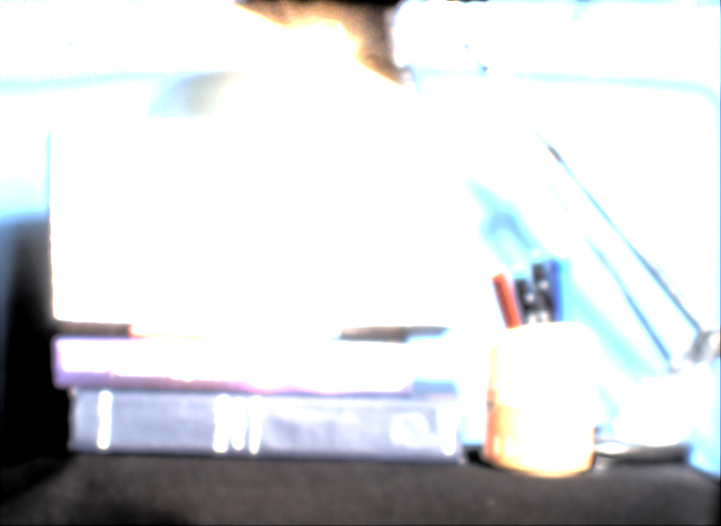
|
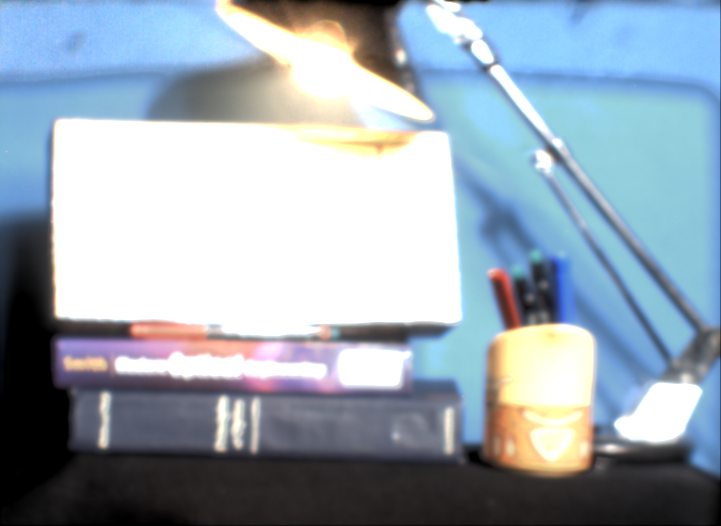
|
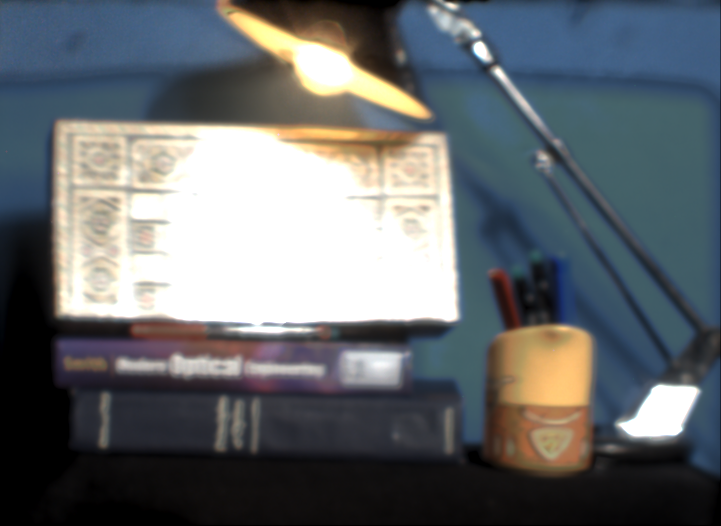
|
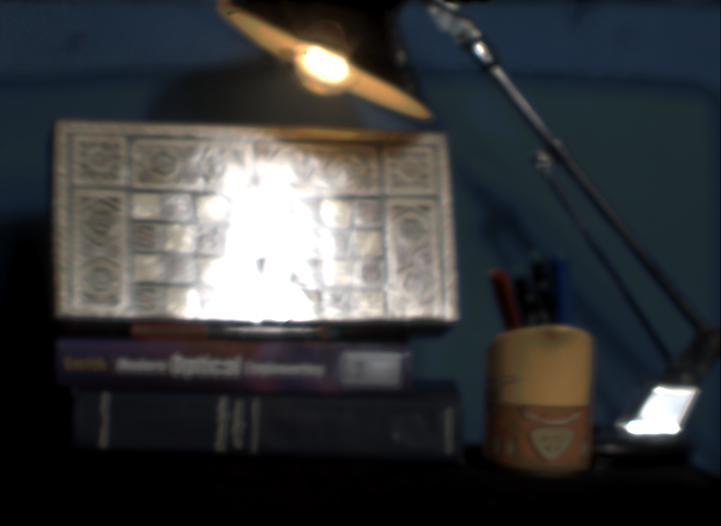
|
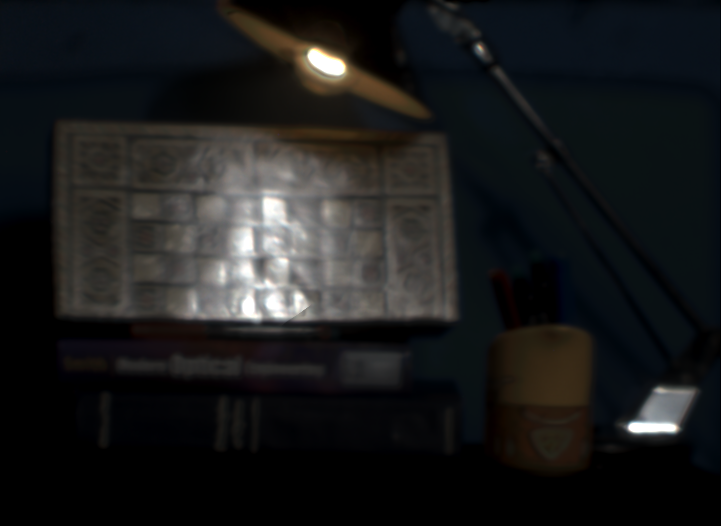
|
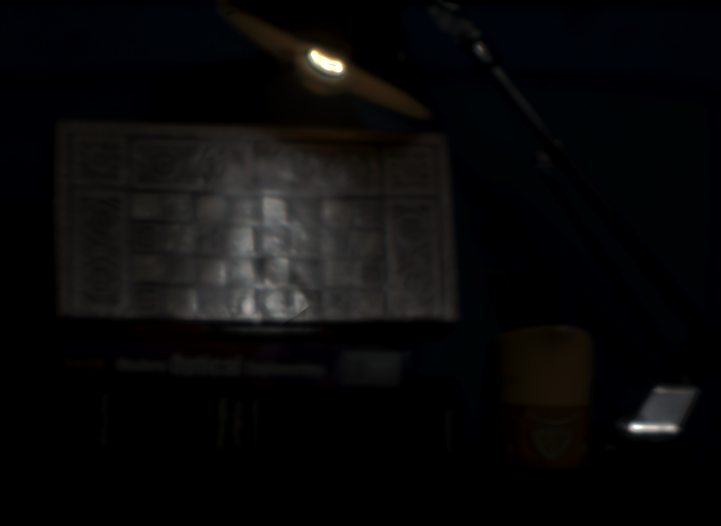
|
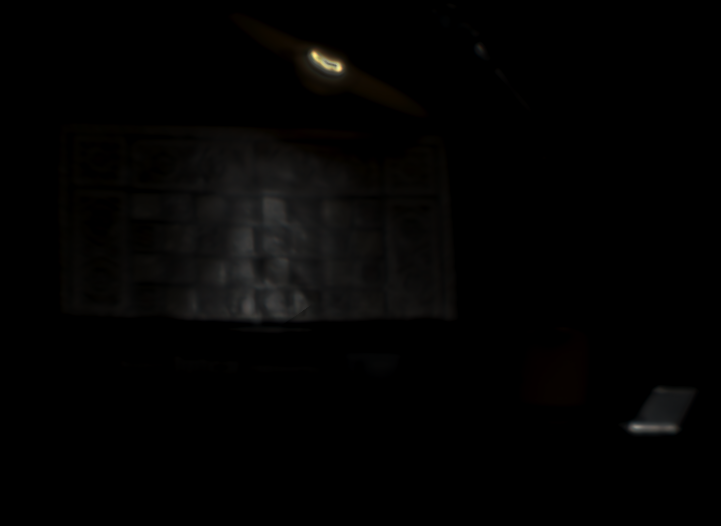
|
Multispectral
[show Multispectral results]Captured image
Simulated color sweep
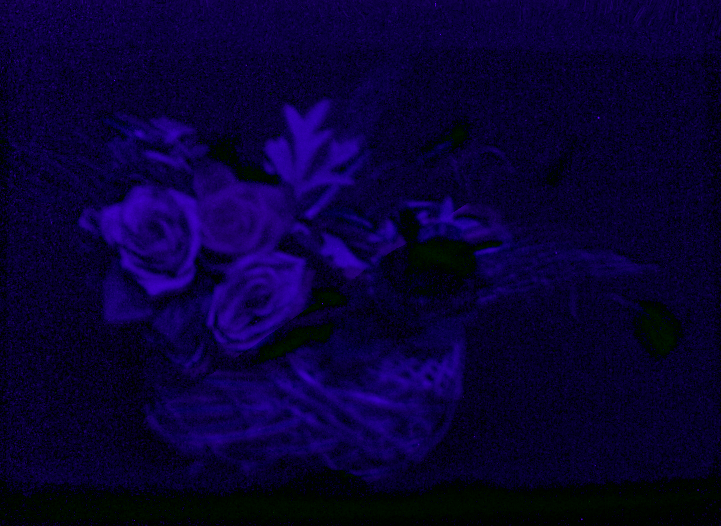
|
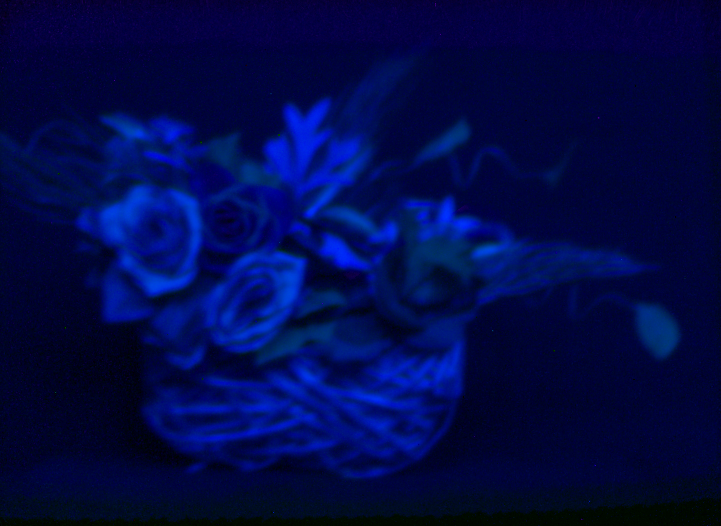
|
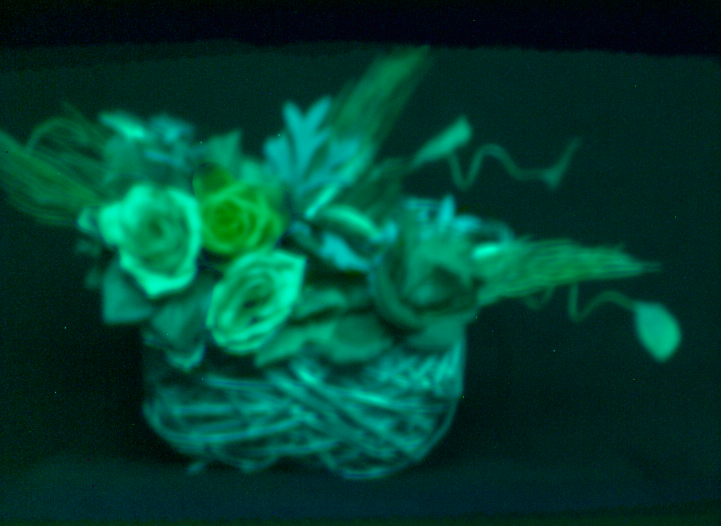
|
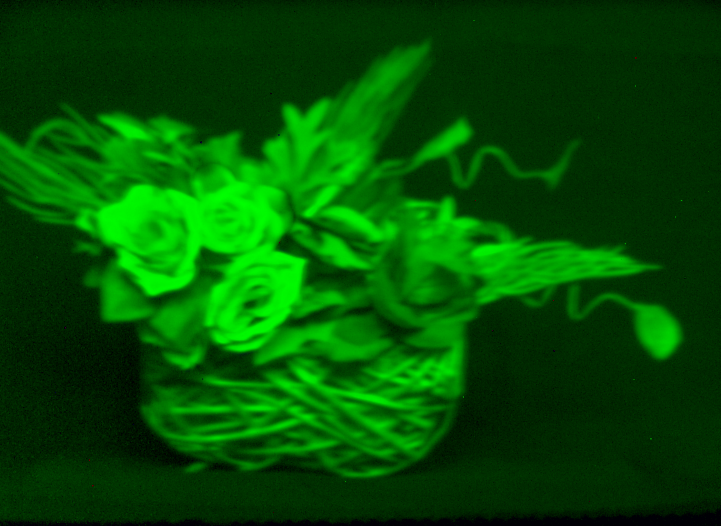
|
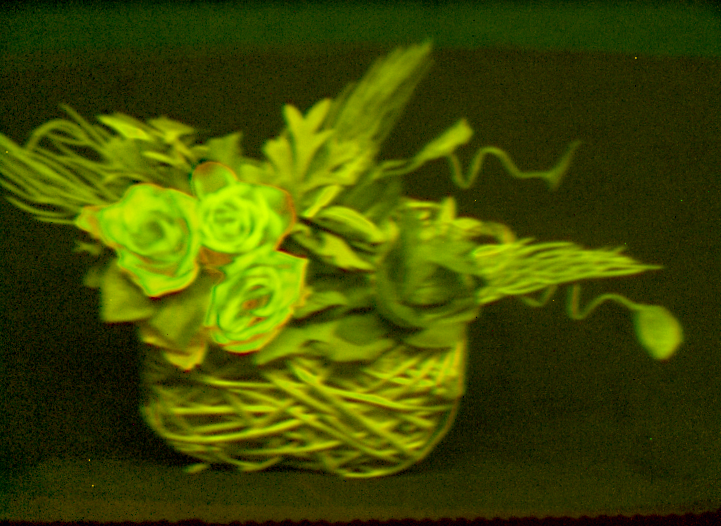
|
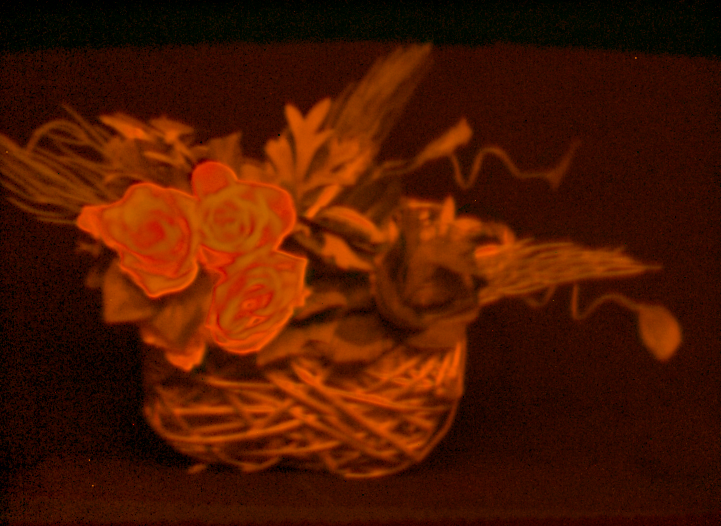
|
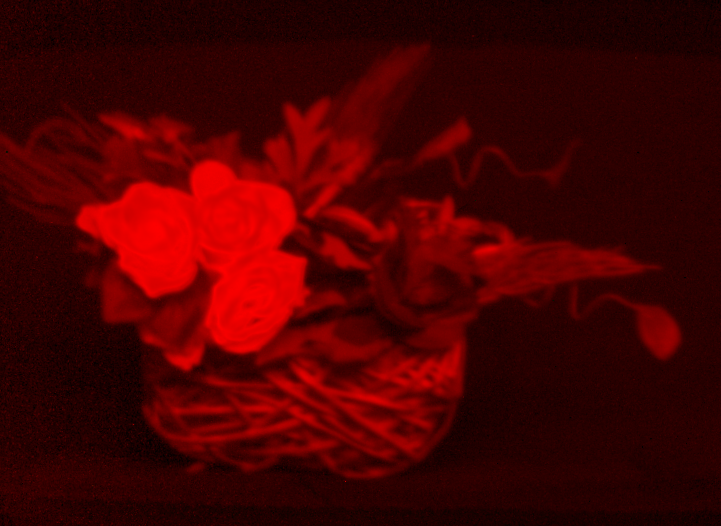
|
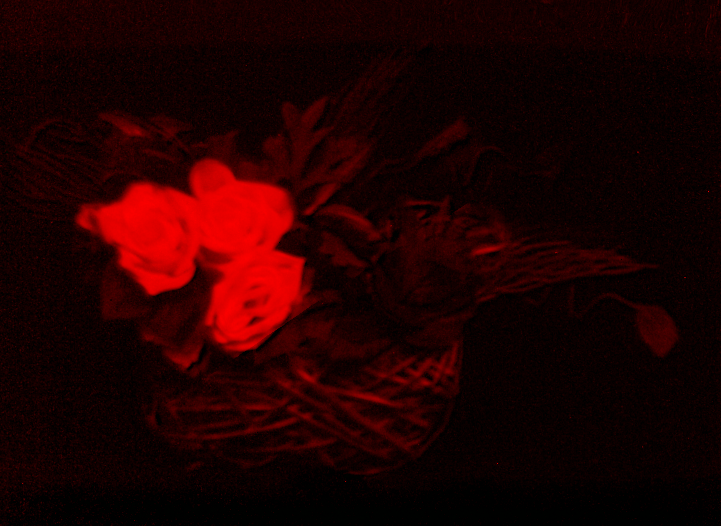
|
Polarization
[show Polarization results]Captured image
Virtually rotated polarizer
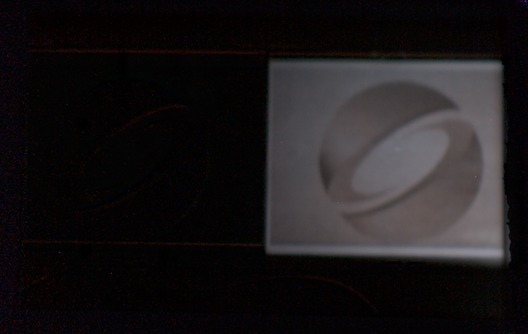
|
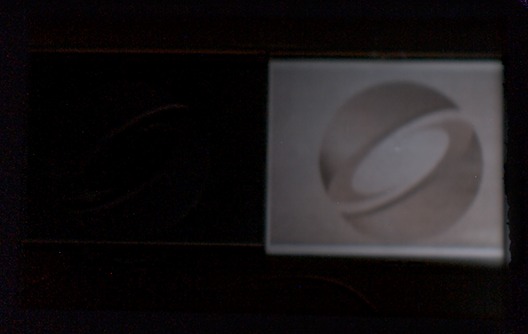
|
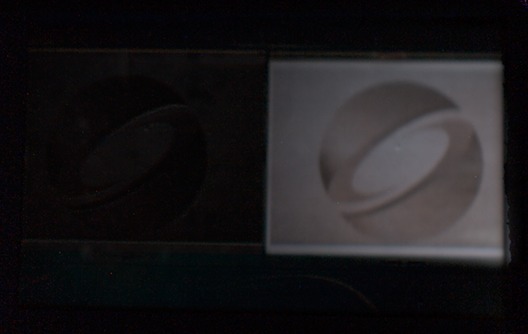
|
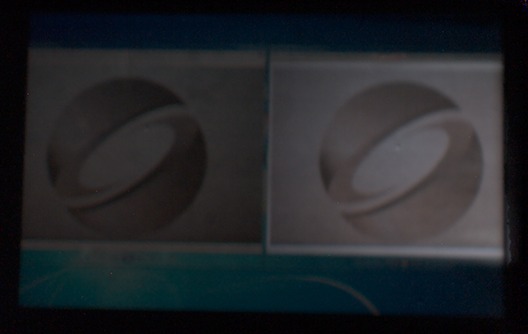
|
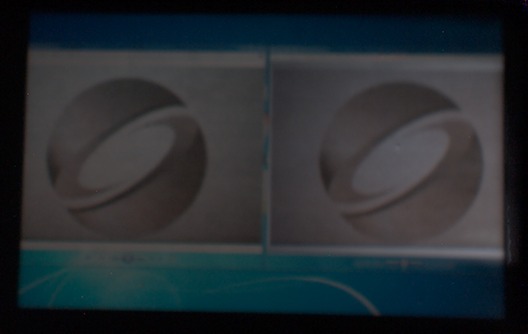
|
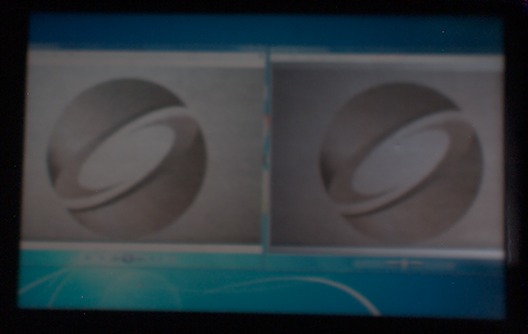
|
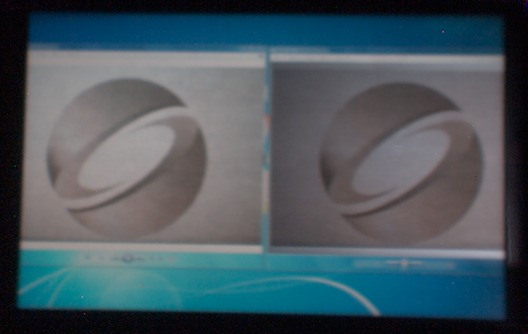
|
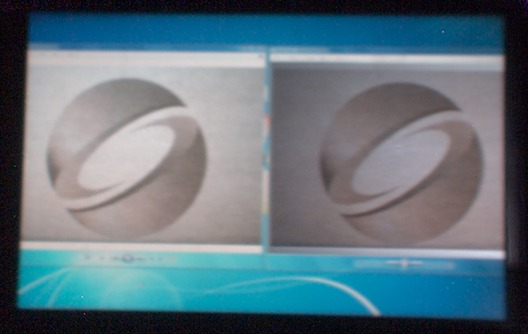
|
Datasets
Here we provide one dataset for each plenoptic function dimension we are able to capture with the KaleidoCamera. Full datasets are available on request however are not being made directly downloadable due to hosting constraints.| Overview Document | [README] |
| Code |
[Code for loading .ppm images] [Code for loading .depthmap images] (only for light field data necessary) |
| Light-field | [Light-field] |
| High Dynamic Range | [HDR] |
| Multispectral | [Multispectral] |

